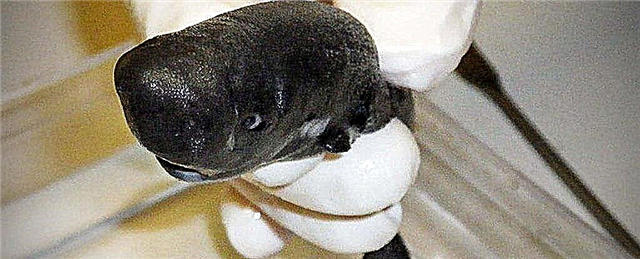
Perhaps every person remembers from childhood those unpleasant surprises that can “provide” sweets. And cotton candy can stick to your face, creating great discomfort.
But why are sweets so sticky? What is the reason for their quality? And why, for example, salty is not always sticky - rather, as an exception?
What makes sweets sticky?
If you pick up a regular piece of sugar, it will be hard and grainy to the touch, but not sticky at all. But if you drop at least a little water on it, stickiness will be detected immediately. Water will destroy the cube, turning it into a sticky and liquid mass, which will lose its stickiness as it dilutes with water. So, if you throw a spoonful of sugar in a mug of water, it will dissolve. And even if you then dip your hand in this weak sugar solution, stickiness is hardly detected. How do such processes occur, and why does stickiness not only appear, but also change?

Considering a weak sugar solution, such as in the indicated example with a spoon of sugar and a cup of water, it should be noted that here each of the sucrose molecules will form a shell of water molecules around itself. And the smaller the percentage of sucrose molecules to water molecules, the denser the shell will be, which will reliably insulate the molecules. Their free state eliminates the stickiness effect.
But if you take a higher concentration of sugar - as in honey, for example, then here the molecules will create already hydrogen bonds. They differ in sufficient density. If you drip honey on your palms and connect them, a hydrogen bond will immediately arise between the substances on both hands. And you have to make a significant effort to break it. You will feel the very stickiness inherent in the sweet, which is formed precisely due to hydrogen bonds.
Strengthening and weakening stickiness - why is this happening?
When diluting sweets with water, the bonds gradually weaken, sucrose molecules “grow” with water molecules. But water tends to evaporate and evaporate, in which case the opposite process is observed. So, if you spill even a weakly concentrated sugar solution on the floor, for example, and forget about it, after a while you may expect an unpleasant surprise in the form of a sticky floor. Despite the fact that initially the sugar solution was not sticky. Part of the water evaporated, the opportunity appeared for the formation of hydrogen bonds, because of this there was a viscosity, stickiness.
In a certain consistency, sweetness is extremely sticky - everyone knows that if you get stained with honey, your hands will not be wiped off. But by diluting the sweetness with water, you can easily get rid of it by simply breaking the bonds between the molecules.
Where is sucrose that provides stickiness to sweets?
Almost all sweets incorporate sucrose. Glucose and fructose, which are also sweet, can also provide a pleasant taste. Fructose has a richer taste and seriously differs from sucrose in this indicator, while glucose is most quickly absorbed by the human body, providing a very quick recovery of energy.
All of them have viscosity and stickiness if they are mixed with a small volume of water, because their properties are close. An example of sticky fructose is a berry or fruit syrup, and liquid glucose can be bought at a pharmacy to study its properties.
All these substances are quite common in nature, and not only sugar syrup, but also honey, fruit juice, and other sweet substances can serve as their examples.
Thus, sweets become sticky due to hydrogen bonds that occur when some water gets into them. Heavily diluted sweets lose their stickiness, when dried, they simply become hard and not sticky at all. It is the presence of a certain volume of water that creates a situation when their viscosity increases, hydrogen bonds form, and such a quality as stickiness is manifested.












